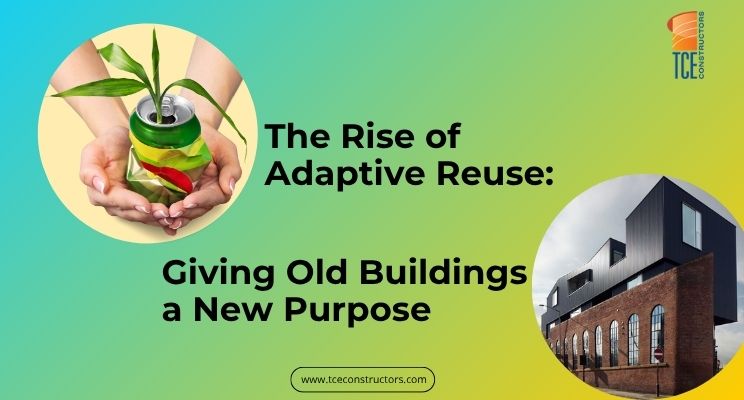
Have you ever looked at an old warehouse, a shut-down school, or a forgotten department store and thought, “What could this place become?”
Across California—and beyond—developers and builders are asking that same question. And their answer? Adaptive reuse.
So, what is adaptive reuse?
It’s the practice of taking older buildings and transforming them into something entirely new and useful. Think:
- A former warehouse turned into a sleek office hub
- An abandoned school reimagined as a buzzing co-working space
- A historic storefront revived into a boutique café or creative studio
Rather than tearing buildings down and starting from scratch, adaptive reuse gives them a second life. It’s smart, sustainable, and surprisingly cost-effective.
Why is it becoming so popular?
Well, let’s take a look:
Land is expensive — especially in cities like Los Angeles, San Diego, and San Francisco. Reusing existing buildings means developers can skip a lot of the early groundwork (literally). Foundations, utilities, and zoning are often already in place.
It’s better for the environment — Traditional construction creates tons of waste. Adaptive reuse reduces debris, uses fewer new materials, and cuts down on the project’s overall carbon footprint.
It saves time and money — With less demolition and fewer permits to chase, projects move faster and cost less.
Of course, it’s not without challenges…
Older buildings weren’t designed with today’s safety codes, energy efficiency standards, or modern comforts in mind. That’s where experts like TCE Constructors come in. Their team combines technical skills with creative thinking to meet today’s standards while preserving the character of each space.
Why does this matter?
Because it changes the way we think about construction.
Instead of seeing a run-down building as a teardown, we see it as an opportunity. Adaptive reuse honors the past, solves modern problems, and builds a more sustainable future—all at once.
It’s not just a trend. It’s a smarter, greener, and more thoughtful way to grow our communities.
Next time you pass an old building, ask yourself: What could this be?
You might just be looking at the next big thing.
